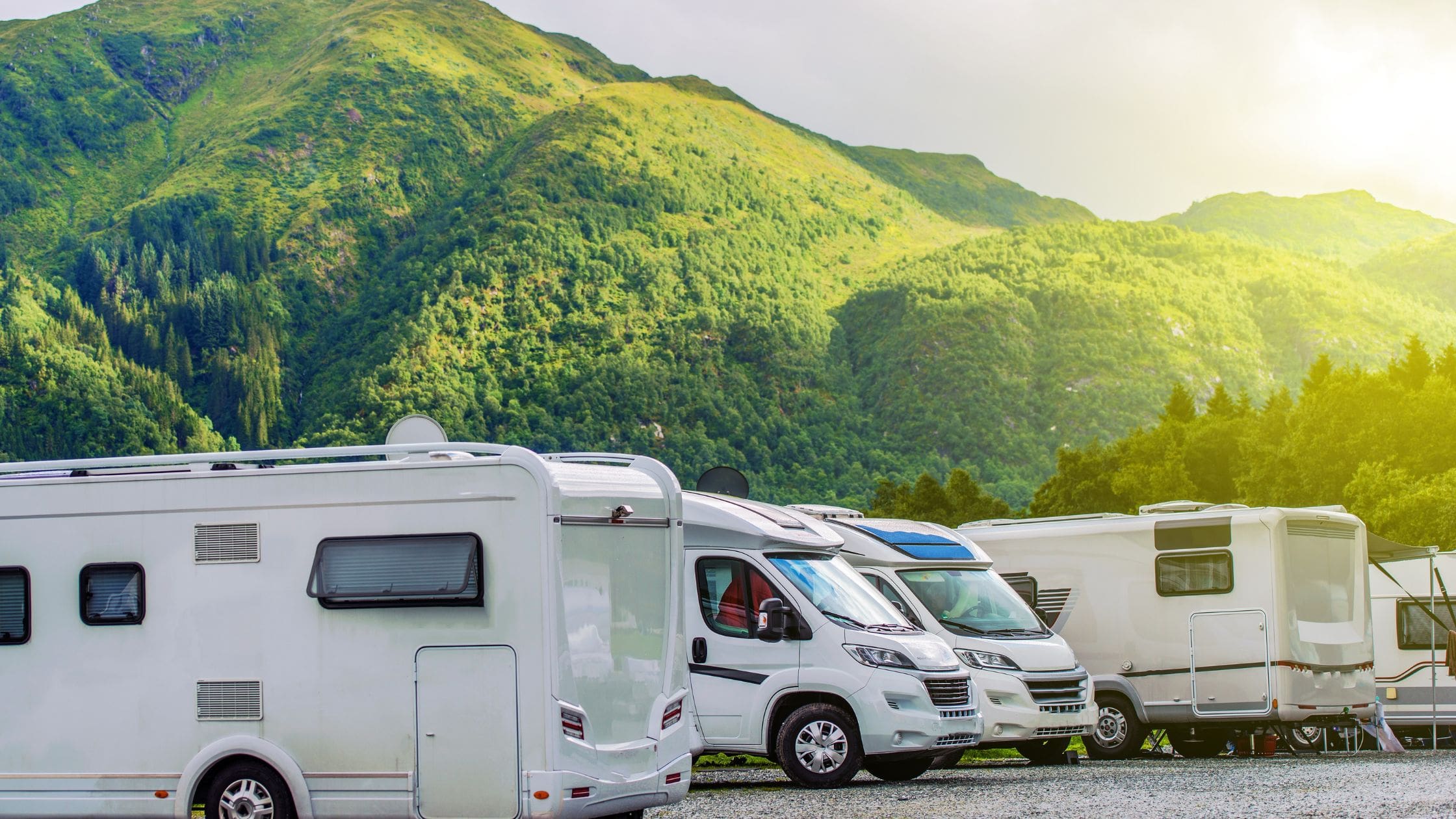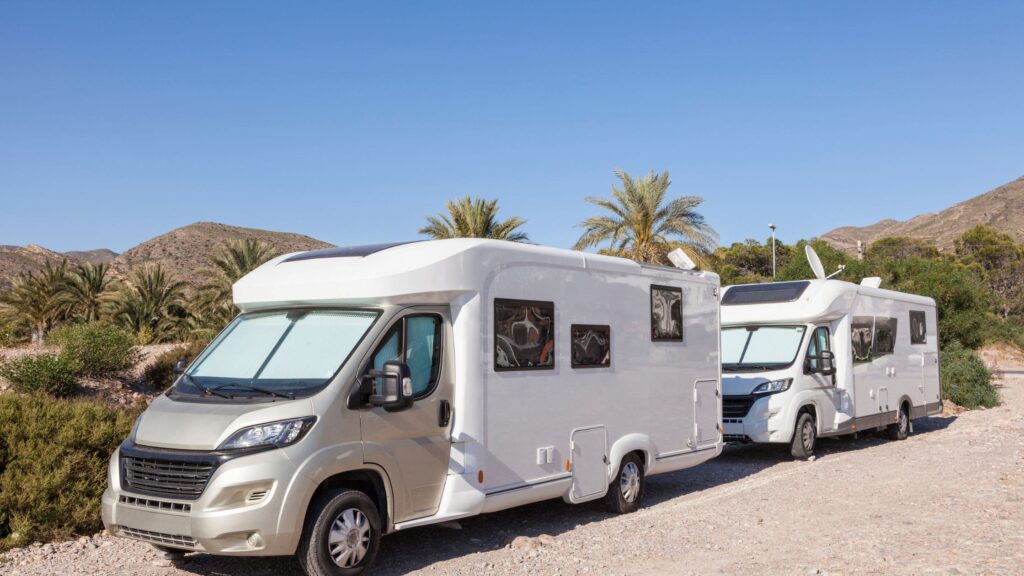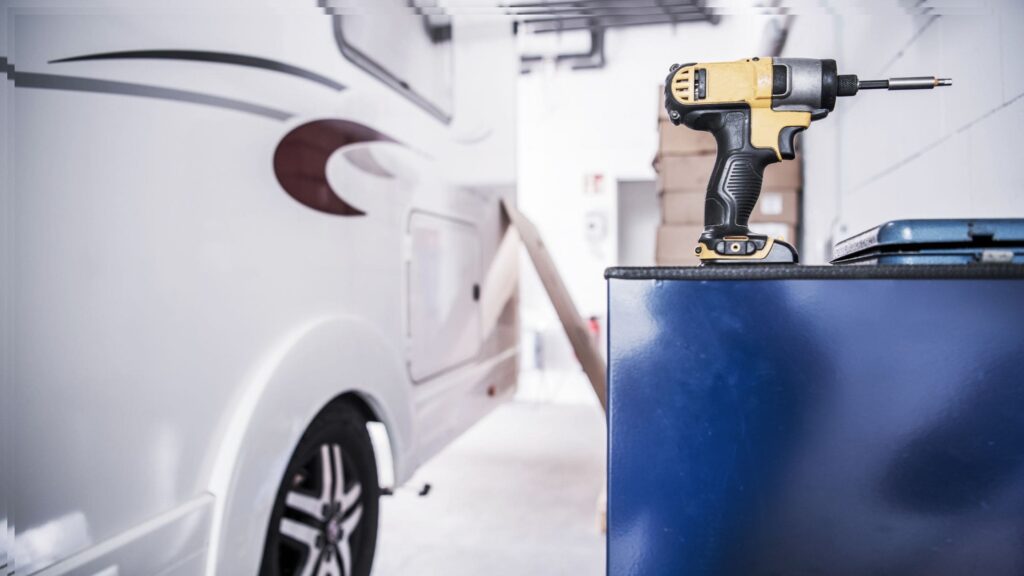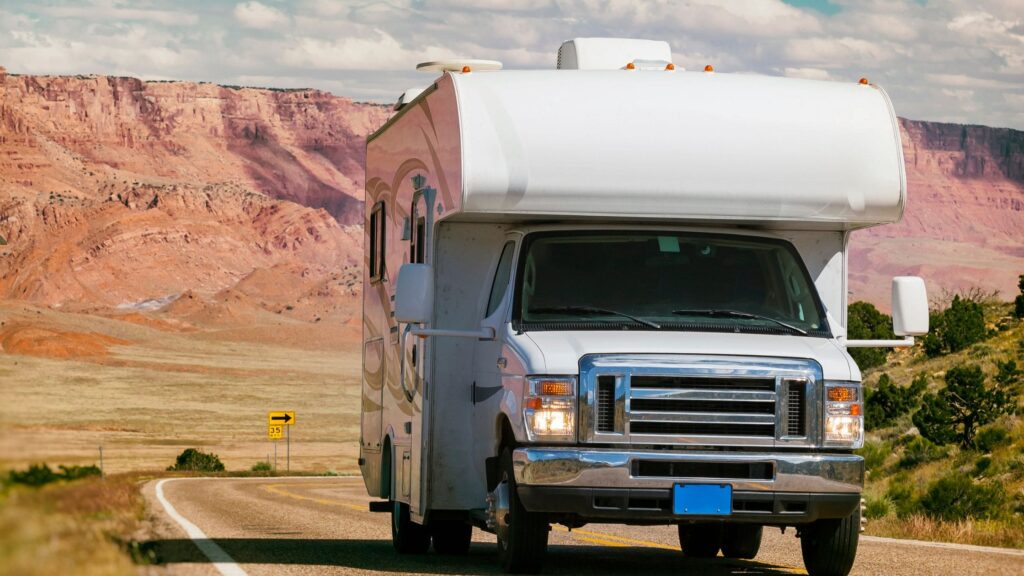Depreciation, the natural decrease in value over time, is something every motorhome owner needs to understand. As a motorhome owner, you’re likely invested not just in the journey but in the value of your vehicle, and knowing how depreciation impacts your motorhome is key to managing that investment. The first year typically hits the hardest, with your motorhome losing about 20-21% of its value. After that initial drop, depreciation slows down, sitting at around 10-15% per year. By the third year, a well-maintained motorhome retains about 70% of its original value, which is significantly higher than cars (around 40%) or caravans (about 55%) over the same time frame.
In this article, we’ll focus on how you can navigate depreciation smartly, helping you make better choices when it comes to buying, selling, or simply maintaining your motorhome to get the best value.
What Is Depreciation and How Does It Apply to Motorhomes?
Depreciation, in financial terms, refers to the decrease in the value of an asset over time due to factors such as wear and tear, age, obsolescence, and market conditions. For motorhomes, depreciation works similarly to other vehicles and assets. In the first year, motorhomes typically experience a significant drop in value, often between 20-21%. After that, the depreciation rate slows to around 10-15% per year until the vehicle reaches about five years of age, where the decline begins to plateau. Over the course of a decade, a motorhome can lose between 60-75% of its original purchase price. For comparison, motorhomes retain about 70% of their value after three years, which is a significantly better value retention than cars (40%) or caravans (55%) in the same period. It’s essential for motorhome owners to understand these patterns, as depreciation tends to hit new units hardest, leaving long-term owners with more stable residual values after year six or seven.
Do Motorhomes Hold Their Value Over Time?
Motorhomes are often thought to lose value quickly, but the reality is more nuanced. While it’s true that new vehicles can suffer steep depreciation in their first few years, motorhomes tend to hold their value better than most vehicles. On average, well-maintained motorhomes retain around 70% of their purchase price after three years, a far better rate compared to cars, which typically lose 60% of their value in the same period. Privately owned motorhomes generally fare better than ex-rental units, as rental vehicles often experience more wear and tear, both inside and out.
Interestingly, mileage matters less than age when it comes to depreciation. Most motorhome owners put on an average of 3,000-5,000 miles annually. Furthermore, many motorhome owners offset depreciation through the savings made on vacations and by renting out their motorhome, making it a viable investment. Overall, expect your motorhome to retain about 70% of its value after three years, 50% at five years, and a gradual decline beyond that if you maintain it properly.
What are the Factors That Influence Motorhome Depreciation?
The primary influencers include the condition and maintenance of the vehicle, the mileage it accrues, the brand’s reputation, the motorhome class, build quality, available features, market demand, and model updates.
Let’s break down some of these elements further.
Condition and Maintenance
Regular servicing, cleaning, and keeping your motorhome free from cosmetic damage can increase its resale value. For example, budget approximately £1,000 annually (or up to 25% of the vehicle’s value for older rigs) to maintain and upgrade your motorhome.
Service intervals should be followed to keep the vehicle in top shape: the engine and chassis should be serviced every two years, an annual habitation check is necessary, and the MOT is required once the vehicle turns three years old. A documented service history with receipts can increase your motorhome’s resale value by several thousand pounds.
Additionally, the environmental conditions where you store your motorhome play a critical role. Areas near the coast, where corrosion can occur due to salt spray, should prompt regular checks for rust and water ingress. Waxing the paint and ensuring the vehicle stays clean from environmental contaminants can help prevent significant depreciation costs caused by neglect.
Usage and Mileage
On average, private motorhome owners drive between 3,000 and 5,000 miles annually, which is relatively moderate and less damaging than the higher mileage seen in rental fleets. Heavy use, particularly by rental services, leads to faster depreciation due to increased wear and tear. However, it’s important to note that while mileage contributes to depreciation, age-related issues such as seal shrinkage or upholstery wear are often the first to appear. These issues typically surface before any major mechanical problems arise. Hence, maintaining moderate mileage and addressing these age-related factors can significantly reduce the impact on the resale value of your motorhome.
Brand and Manufacturer Reputation
Well-established brands with a strong reputation, particularly those known for durable chassis and high-quality construction, tend to depreciate more slowly. For example, European or Japanese manufacturers, often seen in premium motorhomes, usually have a stronger resale market and can maintain their value better over time. On the other hand, budget-friendly or newer brands, while offering a lower purchase price, may experience faster depreciation due to potentially weaker service networks and lower build quality. When considering your motorhome investment, it’s essential to factor in the long-term depreciation potential based on the brand’s reputation, which plays a key role in its resale value.
Motorhome Class and Type
Class C motorhomes tend to hold their value the best, with an average annual depreciation of about 8%. Class B motorhomes fall in the middle, experiencing a depreciation of 30-33% within the first three years and around 60% after ten years. However, Class A motorhomes experience the steepest depreciation curve. By the third year, they may lose anywhere from 30-45% of their value, and by the fifth year, this loss can reach 65%. After ten years, some Class A rigs may depreciate by as much as 75%. Smaller and more compact layouts, such as Class B units, often retain more value due to increasing demand for fuel-efficient motorhomes. Additionally, motorhome owners typically seek layouts with more sleeping areas and easy maneuverability, contributing to the relative retention of value in these smaller models.
Chassis, Body, and Structural Components
The type of chassis, the materials used, and the overall build integrity of your motorhome are key factors that influence its long-term value. Motorhomes built on rear-wheel-drive commercial bases with galvanized frames typically outlast those with lighter, untreated steel frames. This durability translates to a longer lifespan, which can help your vehicle retain its value better over time. Regular inspections for rust, delamination, and any accident repairs are essential, as structural issues can drastically reduce the resale value of your motorhome by 10-15%. Always ensure the chassis and body components are in top condition, as they can significantly affect the depreciation rate.
Additional Features and Accessories
Upgrades and additional features can positively or negatively impact your motorhome’s resale value. High-quality add-ons like professionally fitted solar panels, diesel heaters, upgraded fridges, extra berths, or automatic gearboxes often add buyer appeal, leading to a higher resale value. However, poorly installed or low-spec add-ons can have the opposite effect, devaluing your motorhome. To avoid this, always keep installation invoices for any upgrades, as they demonstrate the quality and value of the improvements made.
Market Trends and Demand Fluctuations
Market trends and demand fluctuations can significantly influence the resale value of your motorhome. Factors such as seasonal demand, fuel prices, and overall economic conditions play a role in shaping motorhome prices. For instance, during the post-pandemic period, travel restrictions and border closures pushed used motorhome prices up due to a boom in domestic travel. On the other hand, oversupply in the market or rising fuel costs can lead to a decrease in demand, accelerating depreciation.
Model Releases and Product Updates
Newer models with updated features and improved technology can impact the value of older motorhome models. Each time a major refresh or model release occurs, it typically causes a slight dip in the resale value of the previous year’s model. As manufacturers release more advanced models, older models, even if in good condition, tend to see their prices decrease by a few percentage points. For motorhome owners, it’s crucial to keep an eye on launch calendars for new models, as this information can help you time your sale for the best value retention.
What is the Depreciation Rate for a Motorhome?
Motorhomes experience rapid depreciation, especially in the first year, with most losing about 21% of their value. After the first year, depreciation rates slow to around 10-15% annually for the next 4 years. By the time your motorhome reaches its 6th or 7th year, depreciation levels off significantly, with annual depreciation rates dropping to about 5%. If you’re a motorhome owner, understanding these rates can help you better plan your purchase and resale strategies. On average, owners see a 60-75% loss in value over a 10-year period. Class C motorhomes tend to lose value slower, averaging closer to 8% per year due to strong demand for their size and functionality.
How to Calculate Motorhome Depreciation?
Calculating motorhome depreciation can be done using a few methods, each offering a different perspective. One common approach is the straight-line depreciation method, which spreads the depreciation evenly over the asset’s lifespan. Another method is market-based valuation, where you estimate depreciation based on similar models in the resale market. Many motorhome buyers also use the “20-30-50-65-75%” rule of thumb to quickly assess depreciation: this rule suggests that your motorhome will lose 20% in the first year, 30% by year 3, and 50% by year 5. For more precise calculations, online depreciation calculators can help you factor in the purchase price, motorhome class, and mileage to estimate future value.
Common Depreciation Formulas
When it comes to calculating motorhome depreciation, two common methods are typically used: straight-line depreciation and market-based valuation.
- Straight-Line Depreciation: This method assumes the motorhome loses an equal amount of value every year. For example, if you buy a motorhome for $60,000 and expect it to be worth $10,000 after 10 years, the annual depreciation would be $5,000 per year.
- Market-Based Valuation: This method takes into account the resale market, using comparable sales data to estimate depreciation. Many buyers also use the “20-30-50-65-75%” rule of thumb, which predicts a 20% depreciation in the first year, 30% cumulative by year 3, and so on. Using these methods, you can determine the value of your motorhome at different stages of ownership.
Annual Depreciation Rates
The depreciation rate varies depending on the type of motorhome. Here’s a breakdown:
- Class C Motorhomes: Typically see an 8-10% depreciation rate each year due to strong demand for their compact size and functionality.
- Class B Motorhomes: These usually experience 10-12% depreciation annually after the first year.
- Class A Motorhomes: They tend to depreciate the fastest, with rates between 12-15% per year due to their higher initial cost and larger size.
How Much Do Motorhomes Depreciate Per Year?
Motorhomes experience varying depreciation rates based on their class. After the first year, the depreciation rate typically drops to:
- Class C: 8-10% annually
- Class B: 10-12% annually
- Class A: 12-15% annually
Depreciation by Motorhome Class
Depreciation rates vary depending on the class of motorhome, with each type experiencing different value retention over time. Here’s a breakdown of depreciation for each class:
- Class A Motorhomes: These typically experience significant depreciation early on. After three years, a Class A motorhome can lose between 30-45% of its initial value. After five years, this increases to around 65%, and after ten years, they can lose up to 75%.
- Class B Motorhomes: These motorhomes hold their value better than Class A units, with depreciation of around 30-33% after three years. After five years, expect a 50% depreciation, and after ten years, it’s around 60%.
- Class C Motorhomes: Class C units generally have the slowest depreciation, losing only about 8% per year due to high demand. After three years, expect a depreciation of 24-25%. After ten years, they can lose around 60% of their initial value.
Depreciation Comparison Table
| Motorhome Class | New Price | After 1 Year | After 3 Years | After 5 Years | After 10 Years | After 15 Years |
| Class A | $100,000 | $79,000 | $55,000 | $35,000 | $25,000 | $15,000 |
| Class B | $70,000 | $56,000 | $49,000 | $35,000 | $28,000 | $20,000 |
| Class C | $80,000 | $68,000 | $60,000 | $48,000 | $32,000 | $24,000 |
New vs. Used Motorhome Depreciation
New motorhomes tend to depreciate faster than used ones. The steepest drop in value usually occurs in the first year, with motorhomes losing around 20-21% of their purchase price. After this, depreciation slows to around 10-15% annually over the next 4 years, and by the time the motorhome reaches 6-7 years old, depreciation levels off. For buyers, purchasing a motorhome that’s 3 years or older can help avoid the steepest part of the depreciation curve, offering better value. Interestingly, well-maintained motorhomes that are 10 years old can still be a great investment, with many units having the potential to last up to 200,000 miles. These vehicles can still provide significant value and remain functional, even after a decade of ownership.
Do Certain Motorhomes Hold Their Value Better Than Others?
Motorhomes vary in how well they hold their value, with some models outperforming others in terms of resale value. Typically, mid-sized motorhomes with four berths, particularly those with fuel-efficient layouts, tend to retain value better and resell faster than larger, highly customised rigs. The smaller size and practicality of these units make them more attractive to a broader range of buyers, which helps to sustain demand. On the other hand, very large or highly personalised motorhomes, with unique layouts or excessive features, often have a smaller pool of potential buyers. These factors can cause depreciation to accelerate, as the demand for specific configurations is lower.
Can You Slow Down Motorhome Depreciation?
Yes, you can slow down motorhome depreciation with careful maintenance and strategic decisions. Keeping your motorhome in top condition is crucial in maintaining its value. Regular cleaning, proper servicing, and addressing wear and tear immediately can prevent issues from becoming significant. Additionally, storing your motorhome in a covered or indoor space, especially during harsh weather, can help protect it from elements that contribute to faster depreciation. If you follow these steps and maintain good records, you’ll not only slow down the rate of depreciation but may even increase your motorhome’s resale value. For motorhome owners, taking proactive measures ensures that your motorhome holds its value over time, allowing for a more profitable sale when the time comes.
Keep the Motorhome in Top Condition
Regular cleaning, servicing, and cosmetic care are essential to maintaining the value of your motorhome. Simple tasks like keeping the interior clean, waxing the exterior, and servicing the engine and chassis can prevent rust, water damage, and mechanical issues. Scheduled maintenance is key, be sure to follow the manufacturer’s guidelines for servicing intervals. This regular upkeep helps minimize the wear and tear that can drastically affect the depreciation of your motorhome. A detailed service record, along with proper documentation of any repairs, also contributes to higher resale prices. Regularly inspecting the motorhome for issues like seal wear or upholstery damage can prevent minor problems from escalating into costly repairs that impact resale value.
Store the Motorhome Properly
Storing your motorhome indoors or in a covered space, especially during harsh weather conditions, helps prevent damage caused by UV rays, rust, and weather-related wear. Harsh sun exposure can fade the paint, while moisture can lead to rust and mold. Additionally, storing your motorhome in a safe and clean environment can protect the tires, seals, and interior from the damaging effects of prolonged exposure to the elements. By protecting your motorhome from environmental wear, you ensure that it retains its value for longer.
Upgrade or Refurbish Thoughtfully
Upgrading or refurbishing your motorhome can increase its value, but it’s essential to make thoughtful decisions about which improvements are cost-effective. Installing solar panels or upgrading the upholstery can appeal to future buyers, but not all renovations offer a good return on investment. Before making any changes, it’s important to weigh the cost of the upgrade against the potential increase in resale value. In some cases, poor quality or unnecessary modifications might actually reduce the value of your motorhome. Always keep track of installation invoices and perform upgrades that match market trends to maximize the depreciation savings in the long run.
Protect Against Weather and Environmental Damage
To mitigate these effects, it’s essential to weatherproof your motorhome regularly. Applying protective coatings to the exterior and ensuring proper maintenance of seals and windows will protect it from rain, snow, and UV damage. Additionally, performing routine inspections for rust, water leaks, and other environmental issues will keep your motorhome in top condition. Storing your motorhome in a covered or indoor space, especially during harsh weather conditions, will help prevent deterioration from exposure to the elements, thus preserving its resale value.
Choose Brands with Strong Resale Value
Well-established manufacturers, especially those with strong service networks and proven durability, tend to maintain their value better. Popular models from trusted brands are typically in demand, making them easier to sell at a higher price down the road. On the other hand, lesser-known or low-cost brands may experience quicker depreciation due to weaker market demand, limited parts availability, or a lack of service networks. Always consider these factors when making your purchase, as a good brand choice can significantly reduce the rate of depreciation.
How to Track the Value of Your Motorhome Over Time?
When tracking the value of a motorhome, utilize tools like NADA guides, RVTrader, or other online valuation platforms to regularly check the resale value of your motorhome. By entering your motorhome’s model, mileage, and condition, you can get a good idea of its current market value. Additionally, keeping an updated maintenance log can significantly boost your motorhome’s resale value. Proper documentation of repairs and services shows that your motorhome has been well cared for, which can help support your asking price when it’s time to sell.
What is the Lifecycle of a Motorhome?
The lifecycle of a motorhome can be broken down into various stages, each marked by significant changes in its value. Motorhomes typically experience the steepest depreciation in the first few years, with most of their value lost within the first 1-3 years. By year five, depreciation levels usually plateau, and the vehicle’s value declines at a slower rate. After ten years, when water-ingress warranties expire, another depreciation dip can occur. However, a well-maintained motorhome can continue to serve for up to 20 years or 200,000 miles, with the resale value still holding some worth for experienced motorhome owners.
How to Maximise the Resale Value of Your Motorhome When Selling?
When selling your motorhome, there are several ways to maximize its resale value. Start by timing the sale to coincide with the peak demand in spring or summer. Ensure that the motorhome is presented in the best possible condition through professional valeting and high-quality photos. Keep a comprehensive service record, including receipts for maintenance and upgrades, as this demonstrates the value of your motorhome and builds buyer confidence. Providing clear and detailed documentation also adds value, making the motorhome more attractive to potential buyers who are looking for reliable, well-maintained vehicles.
Can You Earn a Return on Your Motorhome?
Yes, you can earn a return on your motorhome through alternative ownership strategies, such as renting it out. By renting your motorhome, you can offset some of the depreciation costs, especially if you rent it out for road trips or holidays. For example, renting out a modern six-berth motorhome can earn around £150 per night. However, it’s essential to keep in mind that increased usage will lead to higher maintenance demands, which should be factored into the financial planning.
How Depreciation Affects Motorhome Insurance and Financing
Depreciation directly impacts your motorhome’s insurance premiums, claim payouts, and loan structure. As your motorhome’s value drops, insurance premiums may decrease, but payouts after a claim could also be affected, especially if the vehicle depreciates significantly. For financing, depreciation can result in negative equity, meaning you owe more on the loan than the motorhome is worth. This is why gap insurance can be valuable, as it covers the difference between what you owe and the motorhome’s depreciated value in case of a total loss.
How Motorhome Depreciation Compares to Other Recreational Vehicles
Motorhomes generally hold their value better than other types of recreational vehicles like travel trailers or campervans. Unlike towables, motorhomes have contained drivetrains, which contribute to their greater overall value retention. The convenience of an all-in-one motorhome, with integrated living and driving features, increases its demand in the resale market, further minimizing depreciation. Travel trailers and caravans, lacking the motorized components, typically see steeper depreciation due to less buyer demand and higher maintenance costs.
When Is the Best Time to Buy or Sell a Motorhome to Minimise Depreciation?
The best time to buy or sell a motorhome to minimize depreciation is typically in the off-season. For buyers, purchasing between October and February, especially January, often leads to lower prices as owners trade in or sell their motorhomes after the peak travel season. For sellers, listing your motorhome in late spring, around March to May, aligns with the spring-summer demand surge. This is when prices are higher, and the market sees increased buyer activity, allowing you to get the best return on your investment.
Conclusion
When it comes to owning a motorhome, understanding depreciation is crucial, whether you’re a first-time buyer or a seasoned owner. It’s true, motorhomes lose value quickly, especially in the first few years. But here’s the good news: with the right care and smart decisions, your motorhome can still hold its value and offer you years of enjoyment. By staying on top of maintenance, choosing a model known for durability, and timing your purchase or sale just right, you can minimize depreciation. Remember, with a little effort, your motorhome isn’t just an investment in travel, it’s a long-term asset that can bring you countless memories and a solid return on investment.
So, let’s make sure your motorhome stays a smart investment for the road ahead!
Frequently Asked Questions
Is Buying a Motorhome Worth It If It Depreciates Quickly?
Yes, buying a motorhome can still be worthwhile despite depreciation. While motorhomes do depreciate quickly, you should consider the value they provide in terms of lifestyle, flexibility, and long-term use. Many owners offset depreciation by renting out their motorhome, generating income while enjoying holidays. Buying after the steep depreciation curve has passed, around year 3, can also make it more financially viable.








